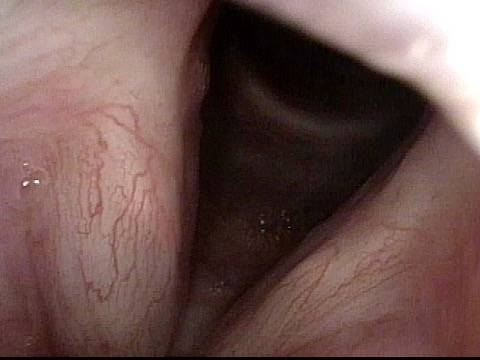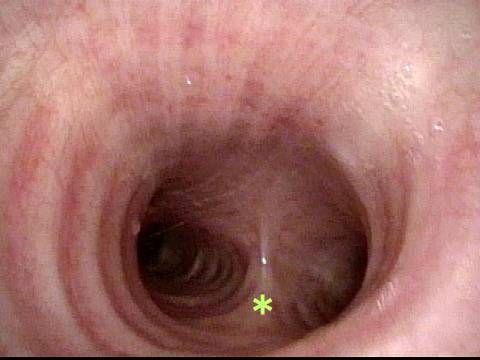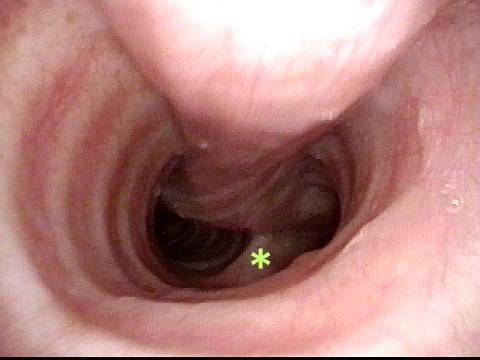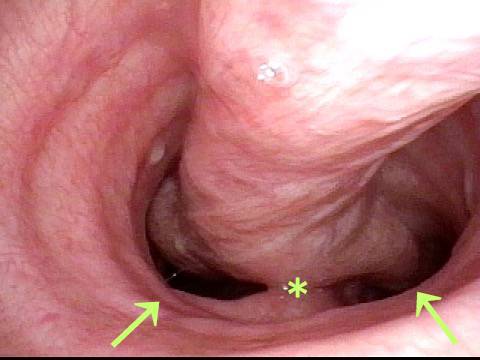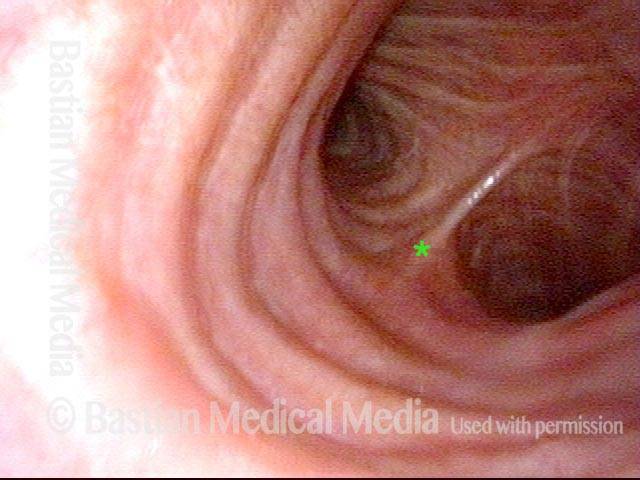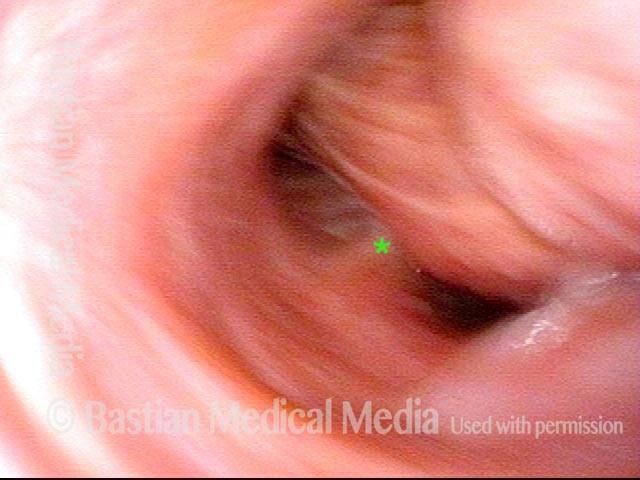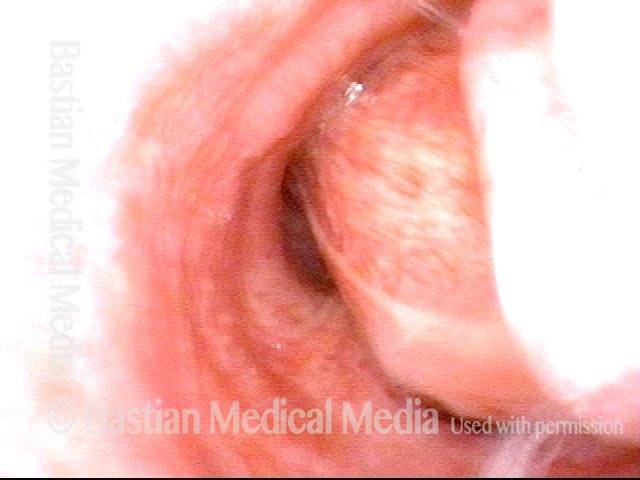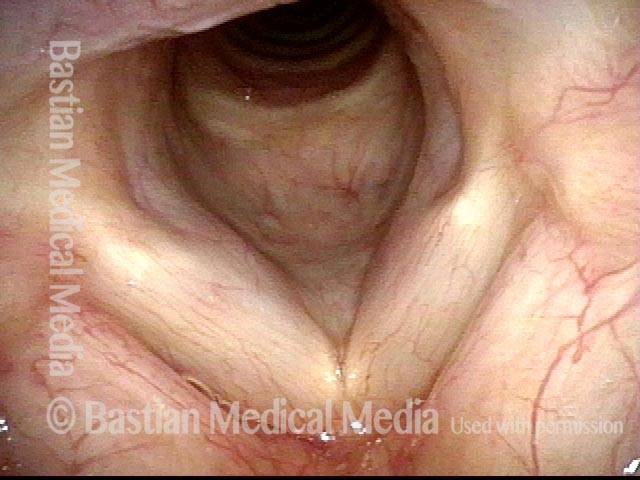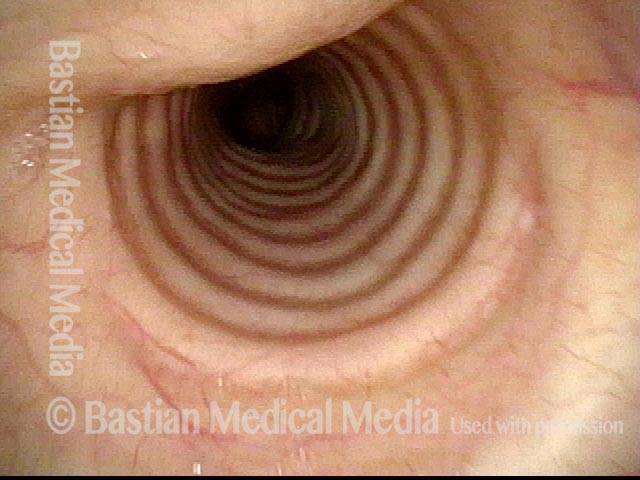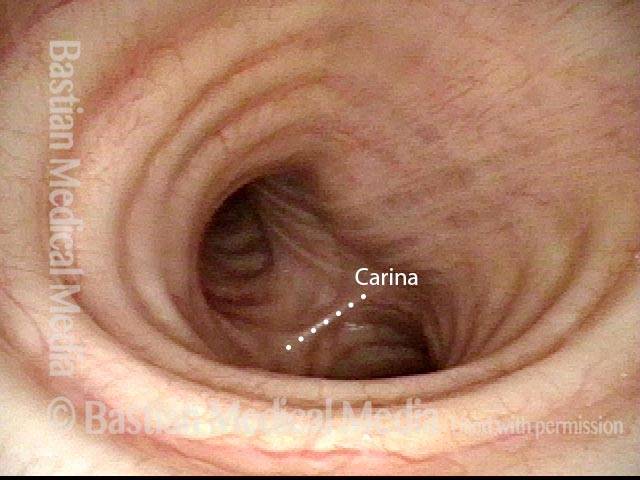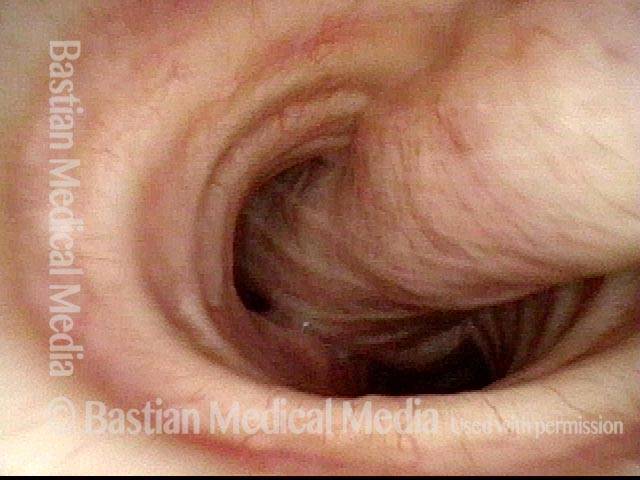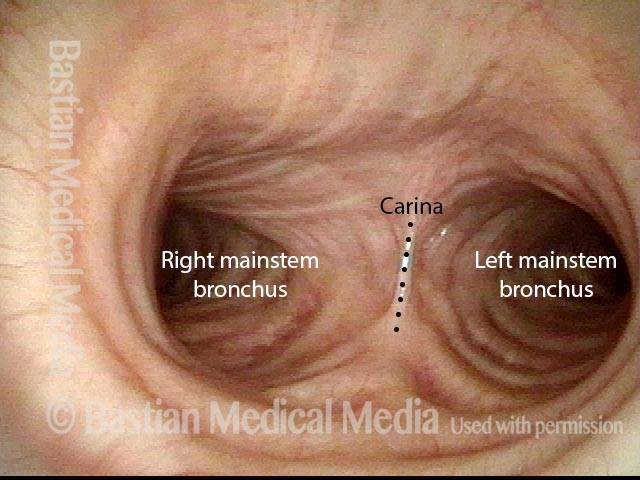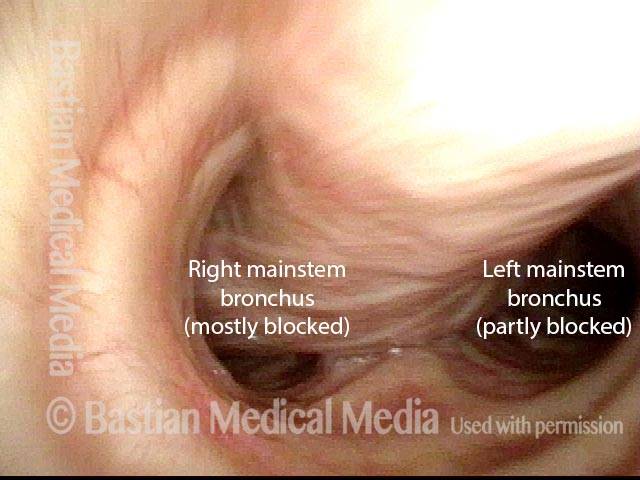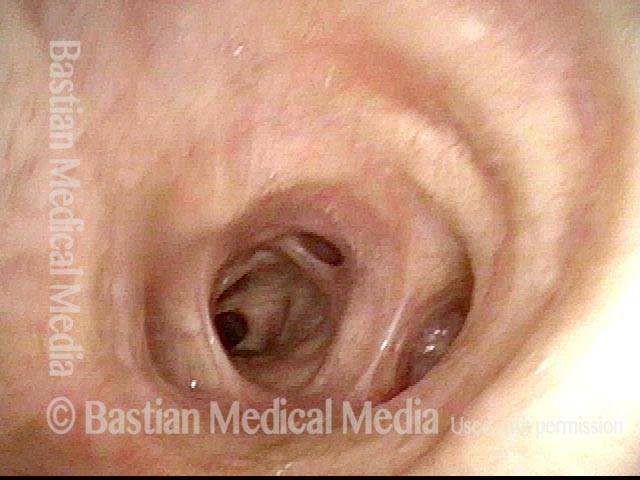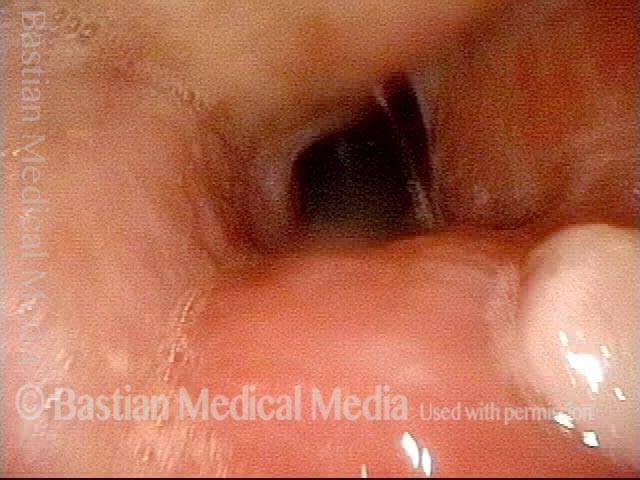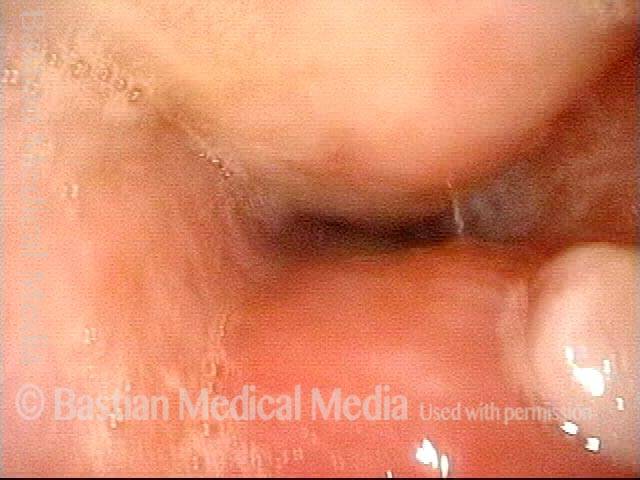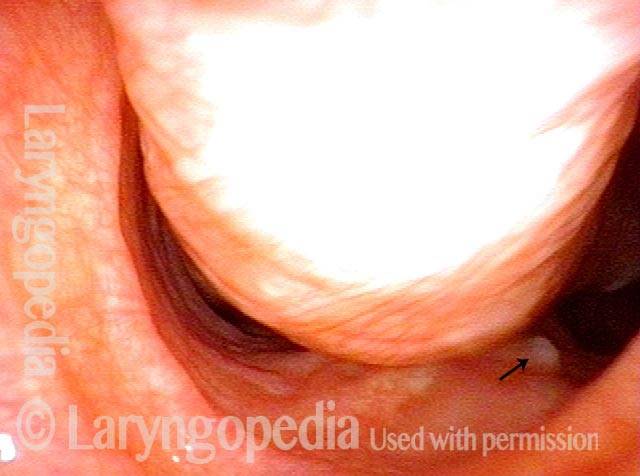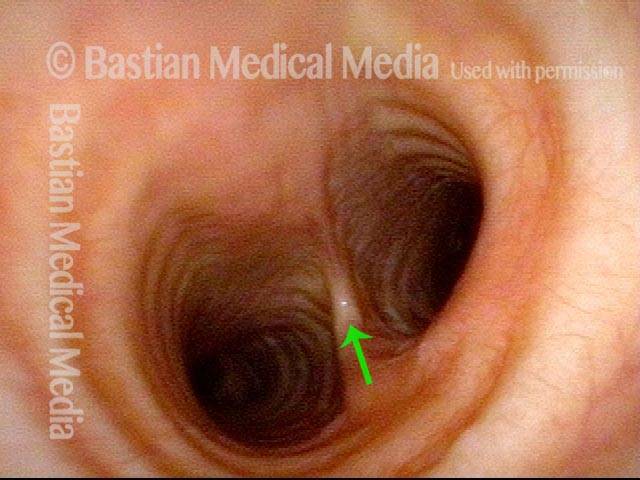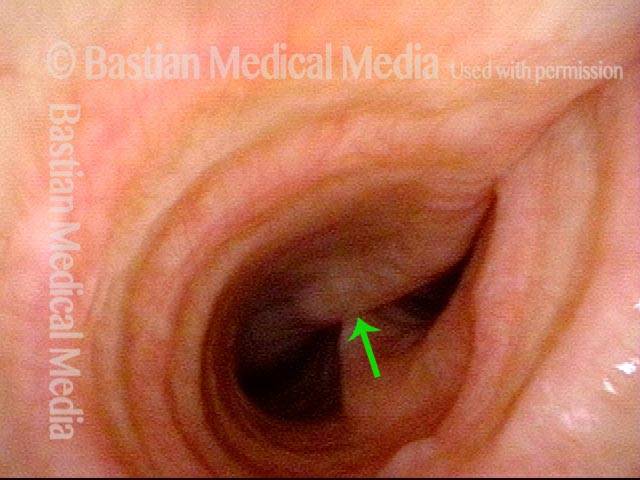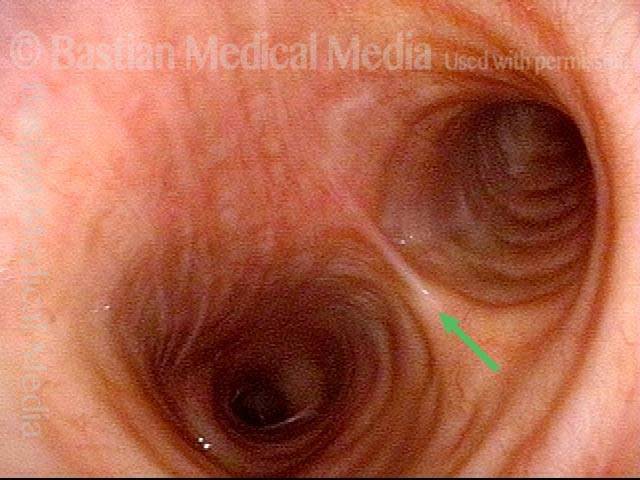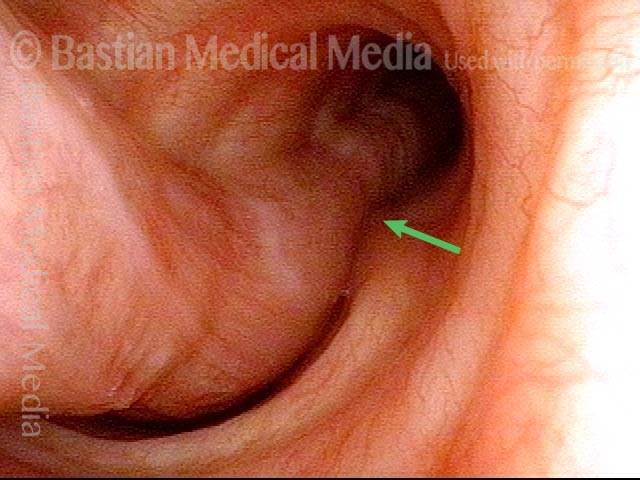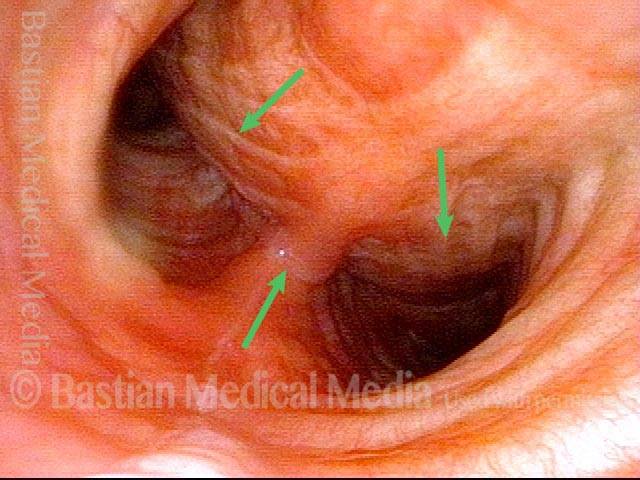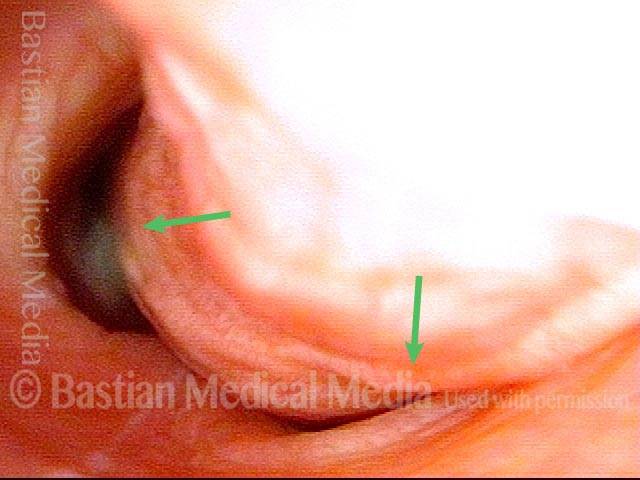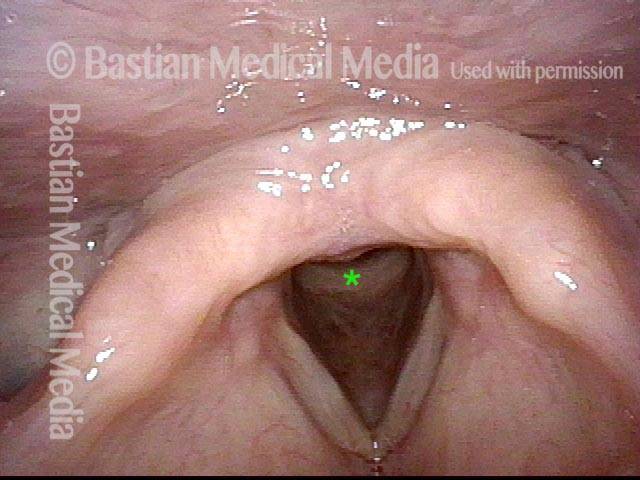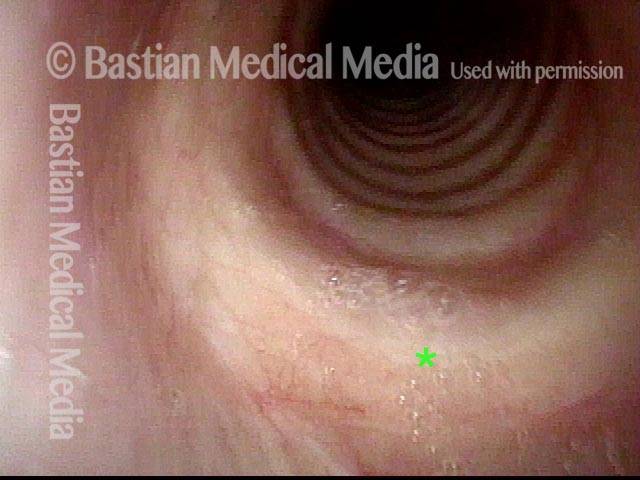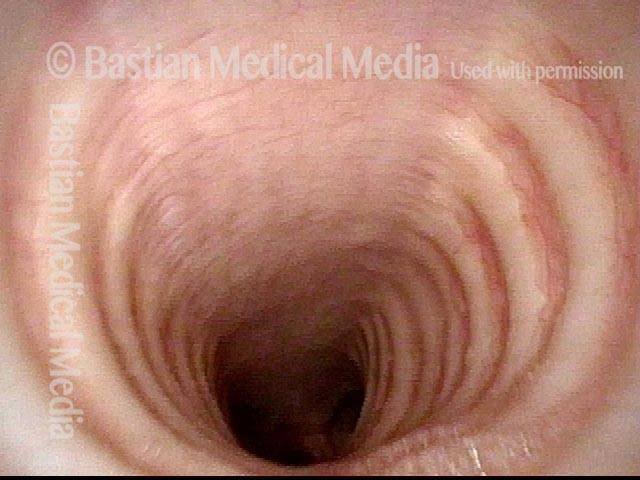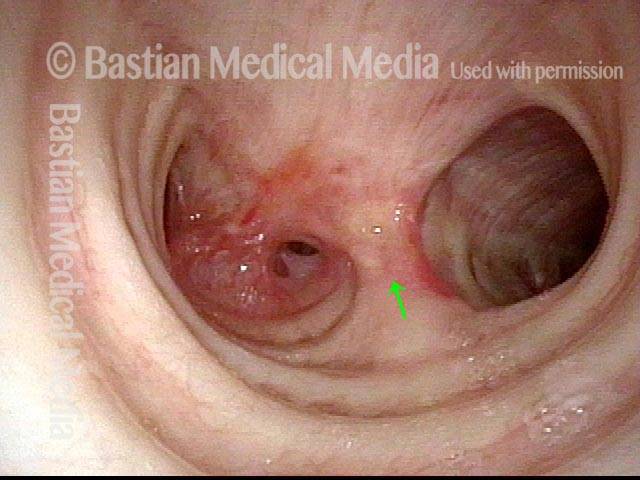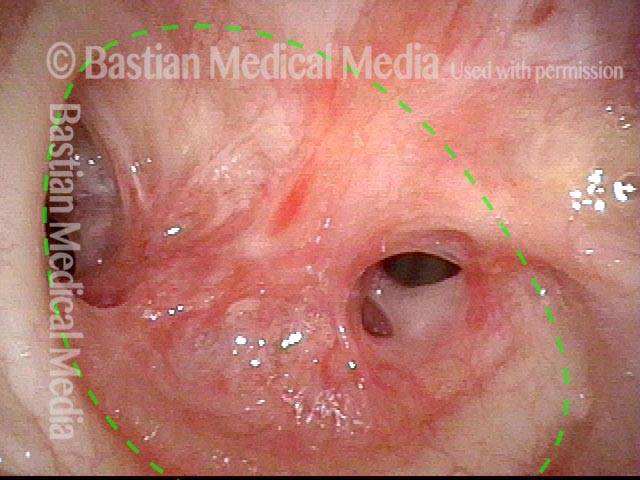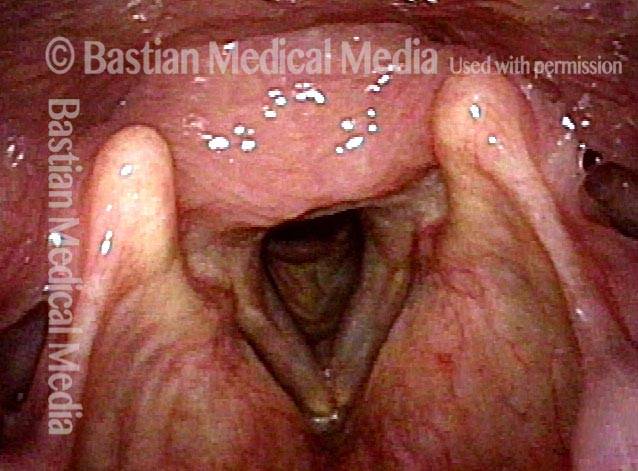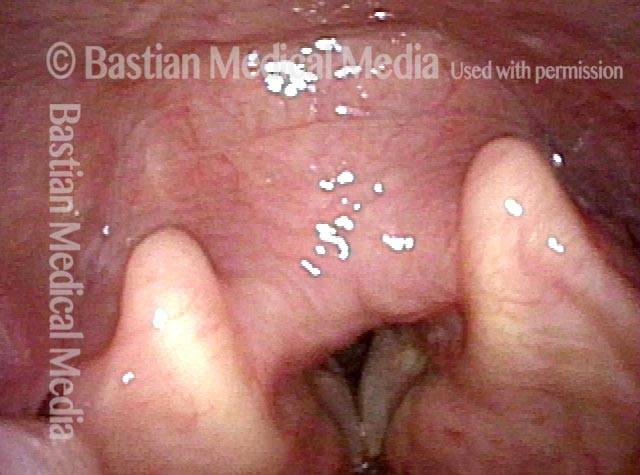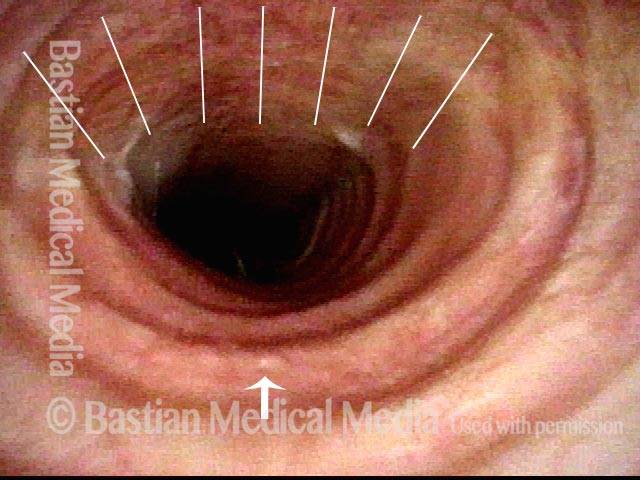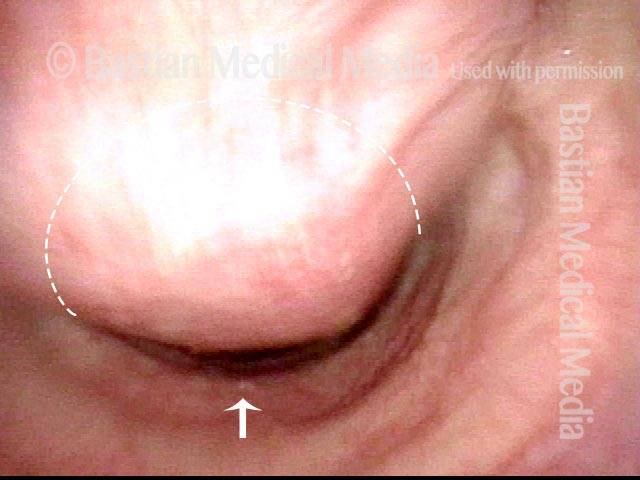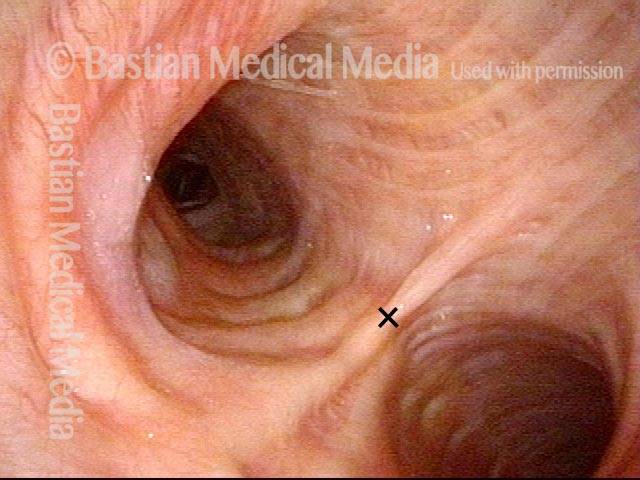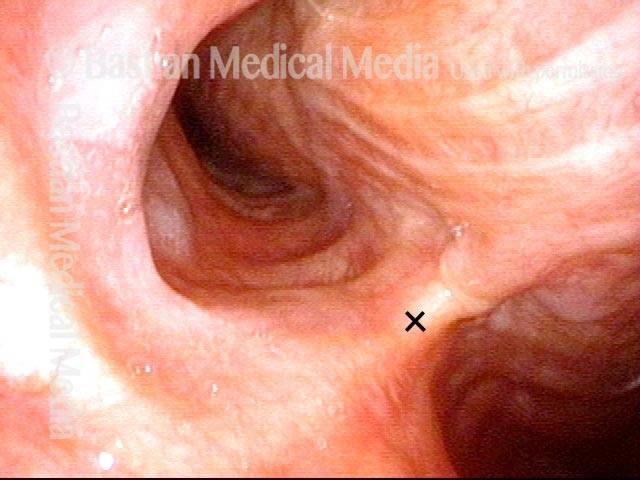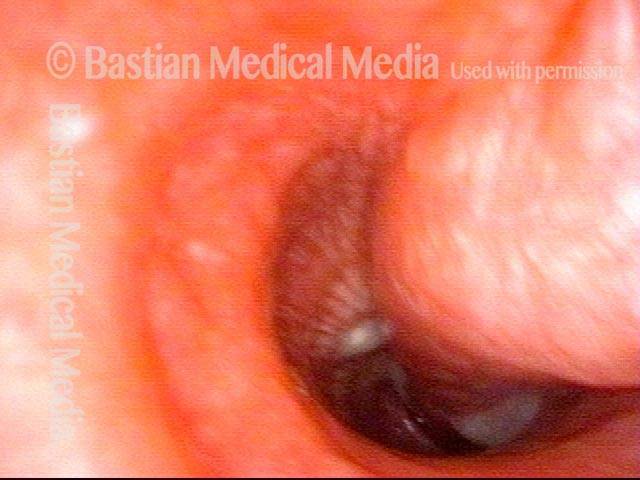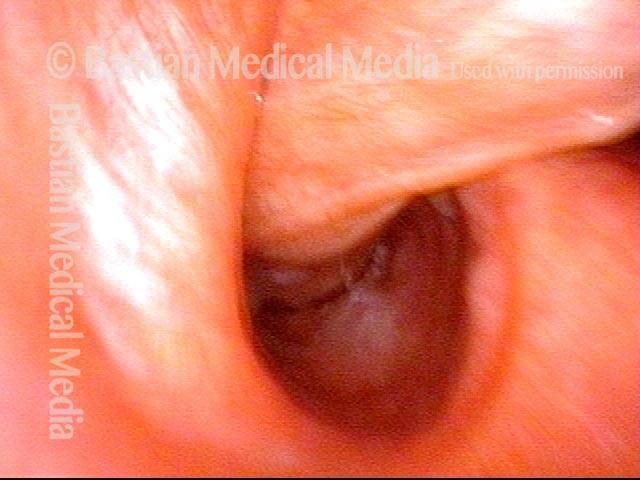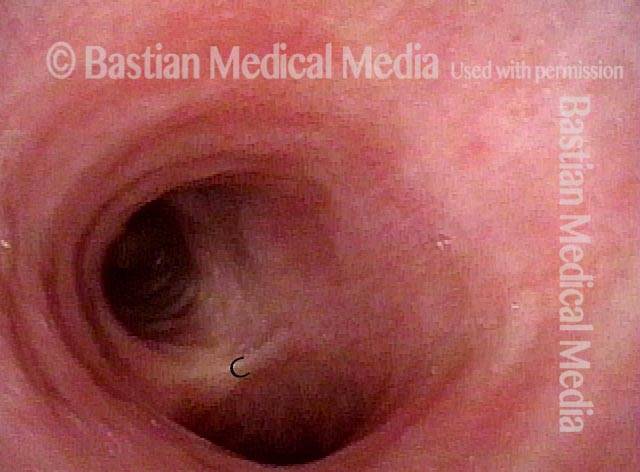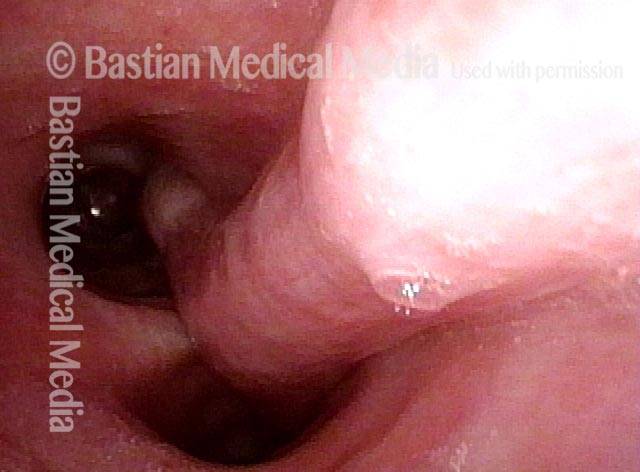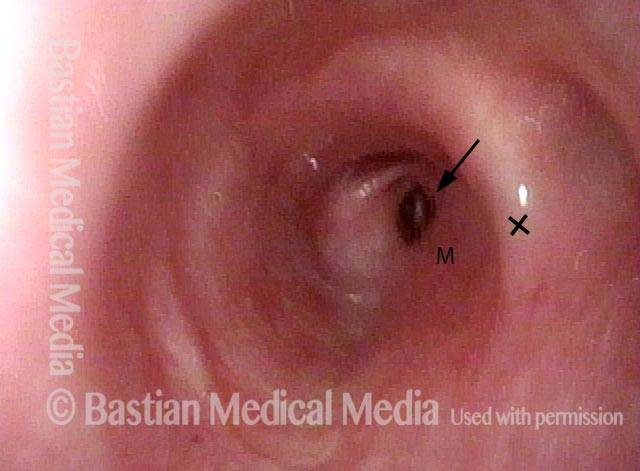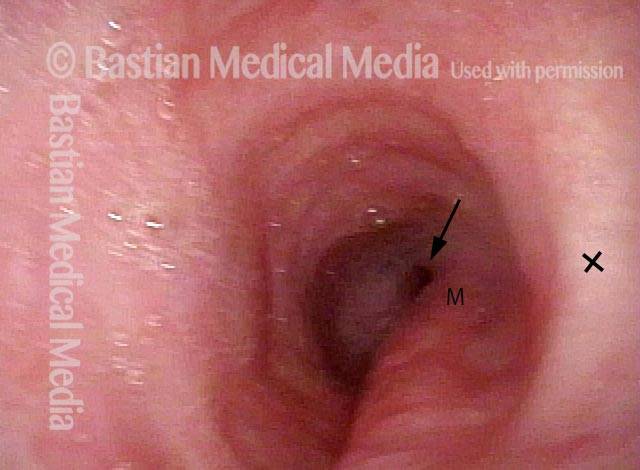Upper Airway Wheezing
Upper airway wheezing is Expiratory wheezing caused by the narrowing of a person’s trachea and, possibly, mainstem bronchi. As expiratory air rushes out through the narrowed trachea or mainstem bronchi, the wheezing sound is created.
This tracheal narrowing and its accompanying wheezing can occur in a variety of circumstances or scenarios. In the case of tracheomalacia, a person’s trachea is unusually flaccid and fails to stay open at its normal diameter. In other cases, there is no anatomical or physiological disorder of the person’s trachea, but the person is able, with a sort of semi-Valsalva maneuver, to flex inward the membranous tracheal wall and decrease the caliber of the “pipe.”
Think, for example, of a “wheezy laugh.” This ability may have no particular significance to the person’s life, but in certain cases, a person may use an unusual degree of this wheezing ability to masquerade (perhaps sub-consciously) as having asthma: we call this nonorganic breathing disorder, tracheal.
Finally, there are also cases in which a person who is grossly obese is susceptible to this momentary tracheal narrowing or collapse, because the added weight on the abdomen puts a kind of constant upward pressure on the diaphragm and serves as a kind of constant mild Valsalva.
